Supersonic flow hitting an obstacle
Case directory
$FOAM_TUTORIALS/compressible/sonicFoam/laminar/forwardStep
Summary
A virtual non-viscous gas flow, "normalized" to have a sound velocity of 1 m/s at a temperature of 1 K, hitting an obstacle at supersonic speed is calculated for 10 seconds.
The gas flows in from the region "inlet" at 3 m/s (Mach number 3) and out from the region "outlet". The region "top" and "bottom" are symmetric boundaries, and the region "obstacle" is a no-slip wall. Model geometry
Model geometry
The turbulence model is not used, and the analysis is performed in 2-dimensions.
The physical properties of the gas are specified in the file constant/thermophysicalProperties as follows.
mixture
{
specie
{
nMoles 1;
molWeight 11640.3;
}
thermodynamics
{
Cp 2.5;
Hf 0;
}
transport
{
mu 0;
Pr 1;
}
}
The meshes are as follows, and the number of mesh is 5250.
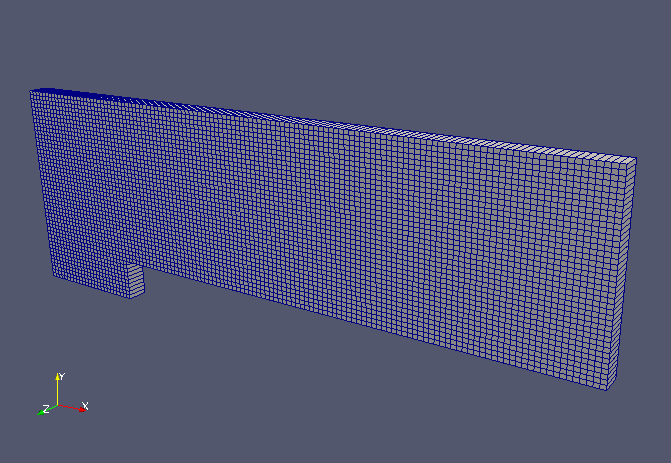 Meshes
Meshes
To visualize the Mach number and temperature, check "Ma" and "T" in the "Properties" tab on ParaView.
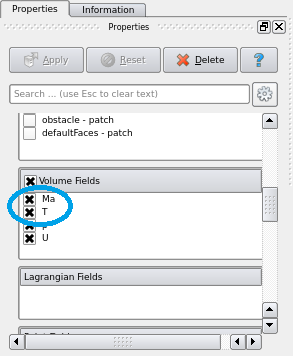 Check "Ma" and "T" in the "Properties" tab
Check "Ma" and "T" in the "Properties" tab
The calculation result is as follows.
The flow velocity is as follows.
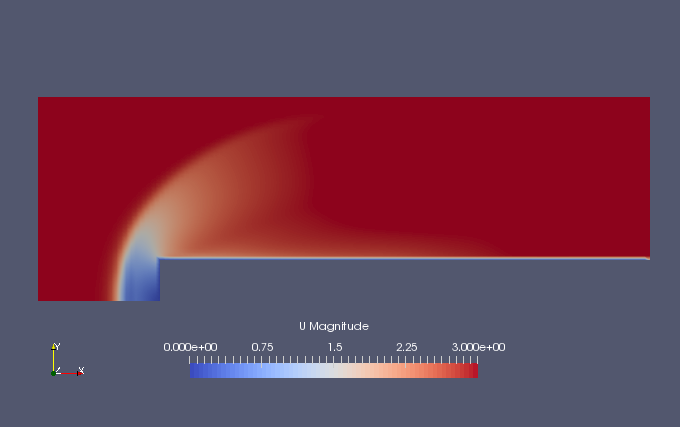 Flow velocity at 0.5 sec (U)
Flow velocity at 0.5 sec (U)
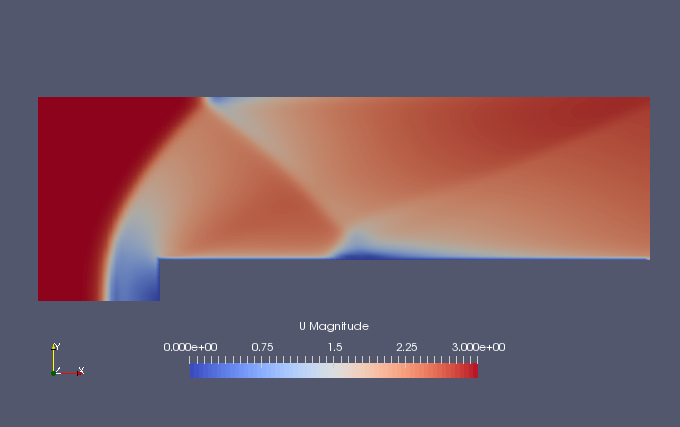 Flow velocity at 2.5 sec (U)
Flow velocity at 2.5 sec (U)
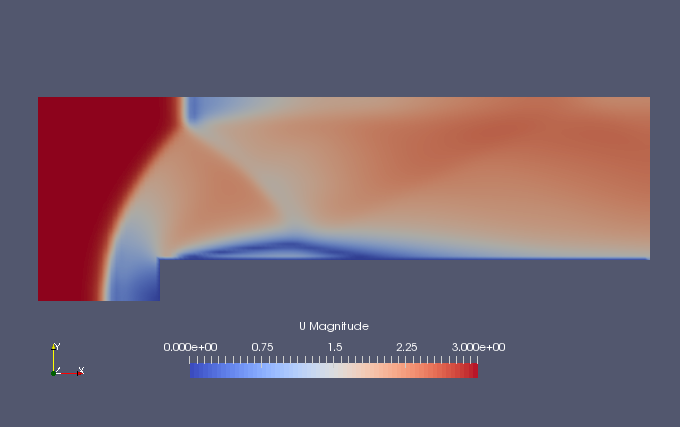 Flow velocity at 5 sec (U)
Flow velocity at 5 sec (U)
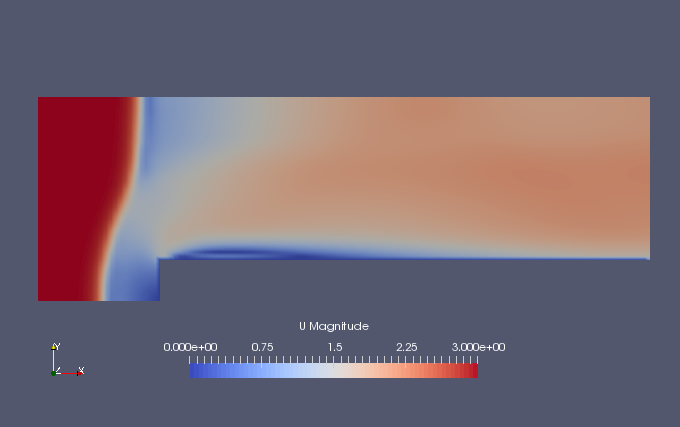 Flow velocity at 10 sec (U)
Flow velocity at 10 sec (U)
And the pressure is as follows.
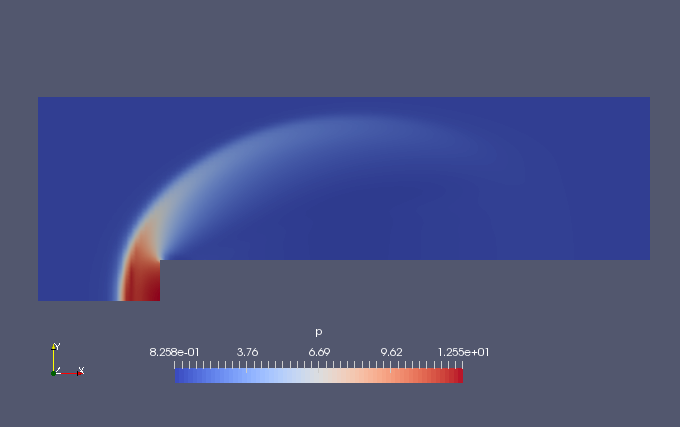 Pressure at 0.5 sec (p)
Pressure at 0.5 sec (p)
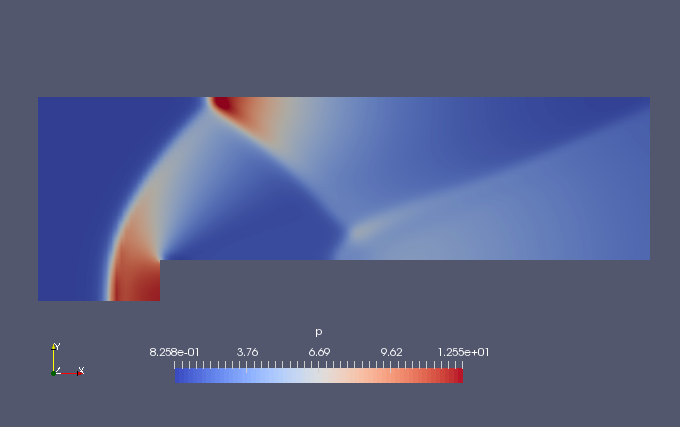 Pressure at 2.5 sec (p)
Pressure at 2.5 sec (p)
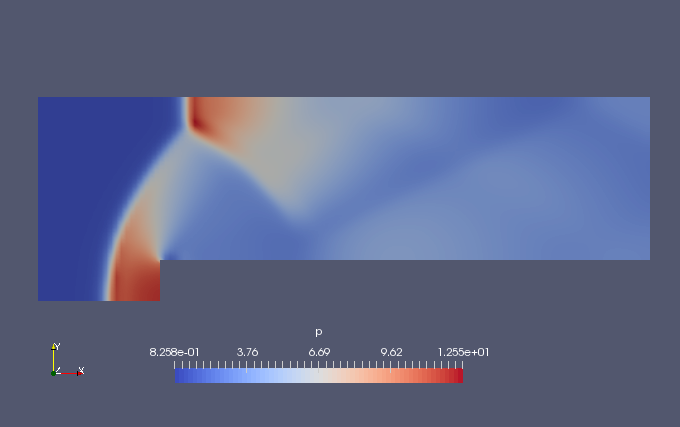 Pressure at 5 sec (p)
Pressure at 5 sec (p)
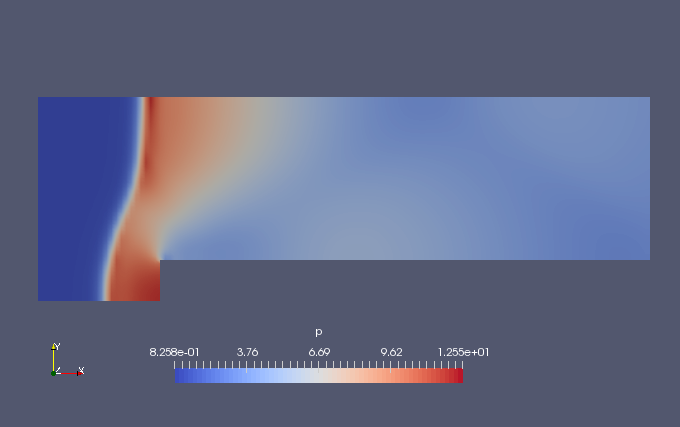 Pressure at 10 sec (p)
Pressure at 10 sec (p)
Note that the upper region of the computational domain, "top", is a symmetric boundary.
Commands
cd forwardStep
blockMesh
sonicFoam
paraFoam
Calculation time
47 seconds *Single, Inter(R) Core(TM) i7-8700 CPU @ 3.20GHz 3.19GHz